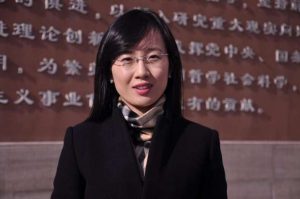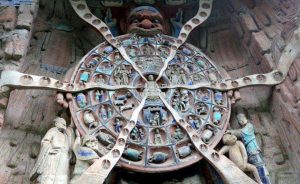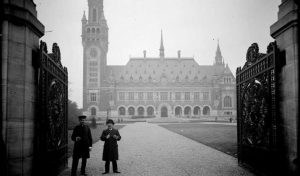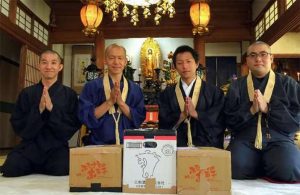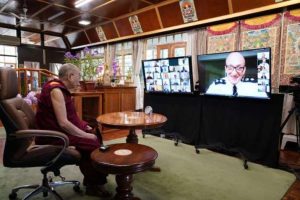
About 20 years ago, when I took my American students to Japan to study Buddhism and Buddhist monasticism up close, one of my students asked Harada Sekkei Roshi of Hoshin-ji an interesting question: “If we do not have an immaterial soul, why does the temple offer funerals and enshrine memorial tablets (Jap: ihai)?” The rōshi replied that these practices are not for the dead but for the living. These practices serve as skillful means (Skt: upāya). Today, I want to look at Japanese Buddhist death rituals as “skillful means: for the living.”
There are many different funerary rites and commemoration rituals in Japan.* These death rituals are mostly conducted by Buddhist priests. In a Japanese Buddhist funeral, the dead individual is bestowed a monastic name (Jap: kaimyō) and thereby admitted to the Buddhist community (Skt: sangha). In addition, Buddhist priests conduct the funeral as well as memorial services for aborted fetuses and stillborn children called mizuko kuyō (lit. “water child”).
What is the purpose of these rituals? In both cases, the spirit of the dead is believed to survive the loss of the body and to continue residing in this world as an immaterial spirit. This means that the departed is not believed to be reincarnated. Such a belief is, of course, at odds with early Buddhist beliefs. The same can be said about the death and postmortem rituals that are not that popular among the Japanese population. For example, some people visit Mount Osore to visit their deceased relatives. Similarly, during the Obon festival the dead are believed to return to this world to meet their families. In both of these practices, it is believed that the spirits or souls of the dead either continue to reside in this world or inhabit the underworld, called Yomi, which is connected with our world.

In the mountains of Yamagata Prefecture, one can find another kind of death ritual. A few Shingon Buddhist temples in Yamagata, such as Risshaku-ji of Yamadera and Jakushō-ji of Wakamatsudera, enshrine “bride dolls” (Jap: hanayome ningyō) and ritually painted “wedding pictures” called mukasari ema. These pictures and dolls are evidence of so-called “ghost weddings” (Jap: meikon) or “postmortem weddings” (Jap: shigo kekkon). As Satō Hiro’o has shown, in these rituals, the deceased who passed away before they were able to marry are ritually married to ghosts. However, while these postmortem weddings are performed at Buddhist temples, the beliefs expressed in these practices contradict—not unlike the beliefs underlying the Japanese Buddhist death rituals discussed above—orthodox Buddhist beliefs about death and afterlife.

In short, the idea that the deceased can marry a ghost after their death cannot be reconciled with the belief that the soul of an individual will be reborn some 49 days after the death of the physical body. In other words, there is a strong tension between folk traditions, even when they are performed by Buddhist priests in Buddhist temples, and with Buddhist doctrine. The fact that these beliefs persist and find their expression in Buddhist rituals even though they are at odds with Buddhist doctrine is remarkable and makes their study even more attractive.
This ritual practice is, with a few exceptions, limited to Buddhist temples in Yamagata Prefecture. The practice itself began in the late Edo period, but has become more popular in the last hundred years. The practice increased during the various wars in the first half of the 20th century. These wars saw an increase in the deaths of unmarried young people. In a society in which marriage was believed to be pivotal to the happiness of individuals, the question arose about how people who died without ever being married could achieve eternal happiness.
The practice of postmortem weddings is extremely interesting. In these weddings, the spirit of an individual is betrothed to a ghost in order to attain eternal happiness. From a Buddhist perspective, this way of thinking reveals two major flaws: first, Buddhism rejects the idea of an eternal or even only temporarily persisting disembodied spirit. Second, Buddhist texts and doctrines usually do not identify marriage as a key to happiness. To the contrary, the Buddhist ideal was expressed in the phrase “leaving home” (Jap: shukke). This idea that marriage is a necessary criterion for happiness is clearly Confucian. In addition, and as noted earlier, the belief that an immaterial spirit survives physical death and resides in this world in which we live originated in Shintō and folk beliefs. This means that, in some sense, postmortem weddings constitute Buddhist rituals that are based on Shintō metaphysics and fulfill a Confucian need.
This brings us back to my opening paragraph. In their defiance of orthodox Buddhist metaphysics, these practices clearly constitute a skillful means within the larger framework of Buddhist philosophy. Of course, rituals such as ghost weddings are meant for living relatives struggling with the untimely departure of a young family member who, in their eyes, still had a long life to look forward to. But what is the purpose of this particular skillful means? Do these rituals serve a purely therapeutic value? I think there is more to this practice.

What “ghost weddings” and the other more popular Japanese Buddhist death rituals have in common is the importance of memorials, be they memorial tablets, Jizō (Kṣitigarbha) Bodhisattva statues dressed with a bib,** or bride dolls and wedding pictures. All of these rituals constitute practices of commemoration and what Avishai Margalit calls “ethics of memory.” In his Religion and Ethics at Odds: A Buddhist Counter-position (Bukkyō vs rinri) (Chisokudo Publications 2016), Sueki Fumihiko argues that memorial practices have an ethical and a religious dimension. It is only in the encounter with the dead (Jap: shisha) that we face the resentment (Jap: han) and the demonic (Jap: ma) caused by our human karma. It is only in the encounter with the dead that we can realize our karma and the karma of all of humanity. It is only in the encounter with the dead that we can liberate ourselves from this karma. And this insight is in line with Buddhist orthodoxy: wasn’t it the vision of his own past lives as well as the karmic journeys of all sentient beings that opened the door to the Buddha’s awakening? In the same way, it is the memory of all human karmic activity that will lead us to wisdom (Skt: prājṇa), compassion (Skt: karuna), and awakening (Skt: bodhi).***

* How to Face Death – Pilgrimages and Death Rituals in Japanese Buddhism (Buddhistdoor Global)
** Who Will I Be? Japanese Buddhist Conceptions of the Afterlife (Buddhistdoor Global)
*** This article is based on talks called “Enryō no yōkaigaku to meikon no tetsugakuteki bunseki” [“Enryō’s Ghost Studies and a Philosophical Analysis of Ghost Weddings”], a special lecture at the 7th Annual Meeting of the International Association of Inoue Enryo Research. September 2018, and “How to Date a Ghost: a Philosophical Analysis of Posthumous Weddings,” a paper given at the AAR, Denver. November 2018.
References
Margalit, Avishai. 2004. The Ethics of Memory. Boston: Harvard University Press.
Satō, Hiro’o. 2015. Shisha no hanayome [The Brides of the Dead]. Tokyo: Gengi Shobō.
Sueki, Fumihiko. 2017. Religion and Ethics at Odds: A Buddhist Counter-position. Transl. Anton Sevilla. Nagoya: Chisokudō Publications.
Related features from Buddhistdoor Global
Connecting the Past and Present of Shugendo – The Revival of Japan’s Ancient Mountain Ascetic Tradition, Part Five
Forbidden from Saying Goodbye
Can You Wish Metta to the Dying?
Death and Equanimity
Do Not Resuscitate
Death and Dying in Japanese Buddhism






